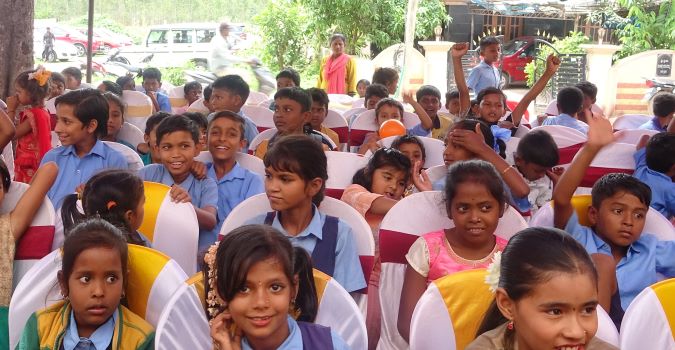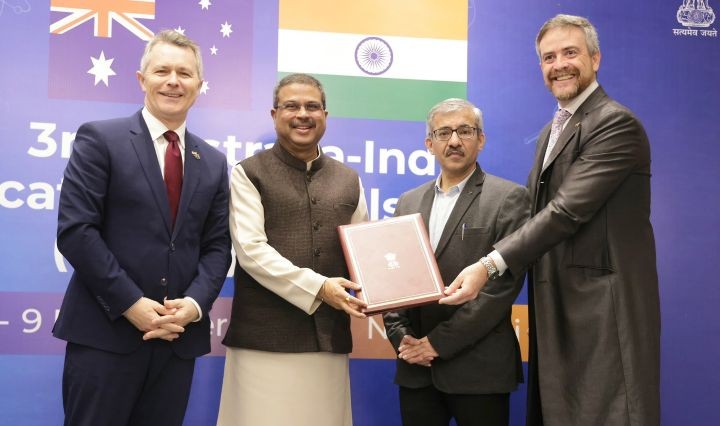
A survey by Delhi-based nonprofit, Indus Action (IA), of the student beneficiaries admitted under the Right to Education RTE 12(1)(c) in the states of Chhattisgarh, Uttarakhand, and Odisha has found that there is a 93.2% Retention Rate under admittance of this entitlement providing 25% reservation for EWS students in unaided recognized private schools in India.
Recognizing a significant gap in research on the retention and social inclusion of children admitted under the Right to Education (RTE) Act 12(1)(c) and investigating these issues since 2017, Indus Action (IA), which majorly works for enabling welfare entitlements, in collaboration with Georgetown University, USA, MIDP (Masters in International Development Policy) students has just released its latest 2024 RTE Retention Survey findings. These findings of the survey that tracks drop-out trends, compares retention rates cross-sectionally, and assesses social and financial discrimination, enabling longitudinal and cross-sectional analysis over multiple years, say there is an improvement in the retention rate from 86.5% of 2021-22 cohort to 93.2% of the 2022-23 cohort.
Conducted across Chhattisgarh, Uttarakhand, and Odisha from March to April 2024, the survey encompassed 4,540 parents and guardians, stratified by state and gender, with a response rate of 67%. Retention rates were 93.2% for the 2022-23 cohort and 86.5% for the 2021-22 cohort, with a dropout rate of 0.5% for both cohorts. Notably, students from the 2021-22 cohort switched schools at higher rates.
Girls had higher retention rates than boys in the 2021-22 cohort, while rates were nearly equal in the 2022-23 cohort. Odisha and Uttarakhand exhibited higher retention than Chhattisgarh. The study identified low social discrimination and some financial discrimination, indicating progress towards social integration under RTE 12(1)(c). Future surveys will continue to explore these trends over time.
This study aims to assess the effectiveness of this provision and the suitability of private schools for disadvantaged children. To fully understand the lived experiences of these students, it is imperative to conduct qualitative research. This approach will provide deeper insights into the educational status and the challenges these students face, thus allowing for a more comprehensive evaluation of the provision’s impact.
Tarun Cherukuri, Co-Founder and CEO at Indus Action, says, “Our mission is clear: every family in India earning less than Rs. 10,000 ($135) monthly should have full access to welfare entitlements for quality education, health, and livelihoods. With 890 million citizens below the poverty line and over 500 schemes often failing to deliver impactful results, one of our key focus points is the execution and implementation of the Right to Education.”
The rapid expansion of private schools has significantly transformed India’s educational landscape. 45% of primary students are now enrolled in private institutions, compared to 19% in other low—and middle-income countries. This growth has created an “active educational marketplace,” even in rural areas. However, it has also led to de facto segregation due to varying school fees and selective admissions.
India passed the Right to Education Act of 2009 to promote educational equality and social inclusion. This act aims to promote equality by ensuring free, compulsory education for grades 1-8 and mandating that private unaided schools reserve 25% of seats for economically weaker and disadvantaged children.
The main findings of the 2024 RTE Retention Survey are as follows:
- Retention Rates:
o 2022-23 cohort: 93.2% retention rate
o 2021-22 cohort: 86.5% retention rate
o Girls show higher retention than boys in the 2021-22 cohort (92.8% vs. 81.8%), but they are nearly equal in the 2022-23 cohort (93.4% vs. 92.9%).
- Response Rates:
o Overall: 67%.
o The 2021-22 cohort had a higher percentage (73%) than the 2022-23 cohort (61%).
o State-wise for 2021-22: Chhattisgarh (74%), Uttarakhand (73%), Odisha (58%).
o State-wise for 2022-23: Uttarakhand (66%), Chhattisgarh (63%), Odisha (54%).
- Dropout and School Switching:
o Dropout rate: 0.5% for both cohorts.
o Switching schools: Higher in the 2021-22 cohort (13.2%) vs. the 2022-23 cohort (6.3%).
o Students switched to government, private aided, and private unaided schools equally.
- Financial Status:
o 45% of the 2021-22 cohort and 48% of the 2022-23 cohort have siblings in private schools, not via RTE 12(1)(c).
o 22% of parents in the 2022-23 cohort pay school-related fees; 46% are uncomfortable with these fees.
- Category of Application:
o ST applicants had the lowest retention rates: 78.3% (2021-22) and 86% (2022-23).
- Social and Financial Discrimination:
o Most parents (more than 90%) do not report explicit social discrimination against children.
o 95.7% of parents agree that children enjoy school, 93.3% say that teachers pay attention, and 98.5% report positive peer experiences.
- Parental Engagement:
o 55.1% engage with teachers monthly, 26.6% more than once a month.
o 94.1% agree teachers inquire about absenteeism.
o 95.4% agree children have friends from wealthier households








